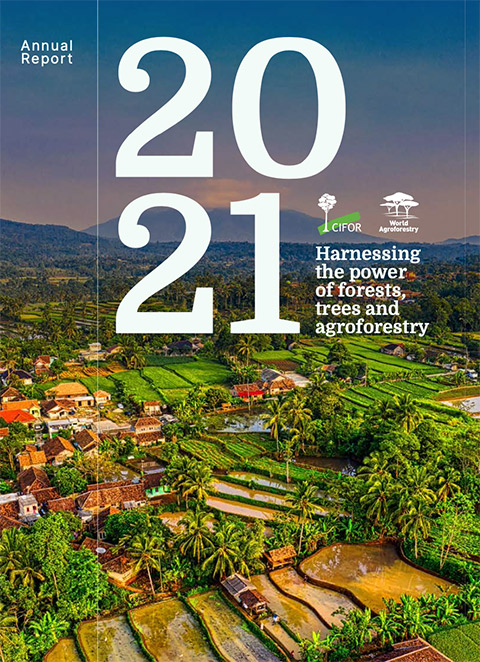Amid the onslaught of bad news about accelerating climate change and collapsing ecosystems, landscape restoration offers hope and a path forward. But how to ensure that restored areas stay restored? What drives ‘permanence’ is a critical research topic for the global restoration agenda, especially as efforts are bolstered by the UN Decade on Ecosystem Restoration (2021–2030) and the Glasgow Leaders’ Declaration to halt and reverse forest degradation by 2030.
CIFOR-ICRAF has deep roots of engagement in Ethiopia, which is known for its commitment to restoration. In partnership with the United States Agency for International Development (USAID), researchers applied the Stakeholder Approach to Risk Informed and Evidence-based Decision-making (SHARED) in the Oromia Engagement Landscape to identify factors that determine the permanence of a restored forest or agricultural ecosystem and whether this triggers habitat degradation elsewhere – i.e., ‘leakage’. Researchers used crowdsourced data from the Regreening Africa App, conducted household surveys and held stakeholder workshops.
Findings showed that households practising permanent land restoration had at least one ‘most-demanded’ tree species near their farms or homesteads along with other diverse tree species. They tended to be wealthier, have larger land plots with livestock and were more aware of natural resource use bylaws and regulations. Households living further away from urban centres were more likely to contribute to leakage compared to those near cities. The main conclusion? Assessing permanence should be incorporated into restoration planning early on.
The Ethiopia work is a component of CIFOR-ICRAF’s Landscape Restoration Transformative Partnership Platform (TPP), which aims to enhance the understanding of what works and what does not in particular socioecological landscapes. The TPP is co-generating and sharing locally relevant lessons through global comparative research on the various dimensions of land restoration.
Supported by United States Agency for International Development (USAID)
“This project demonstrated the importance of linking socioeconomic and biophysical drivers of degradation in order to design long-term land restoration options that reduce leakage and increase permanence.”
Leigh Ann Winowiecki
Team Leader, Soil and land health

